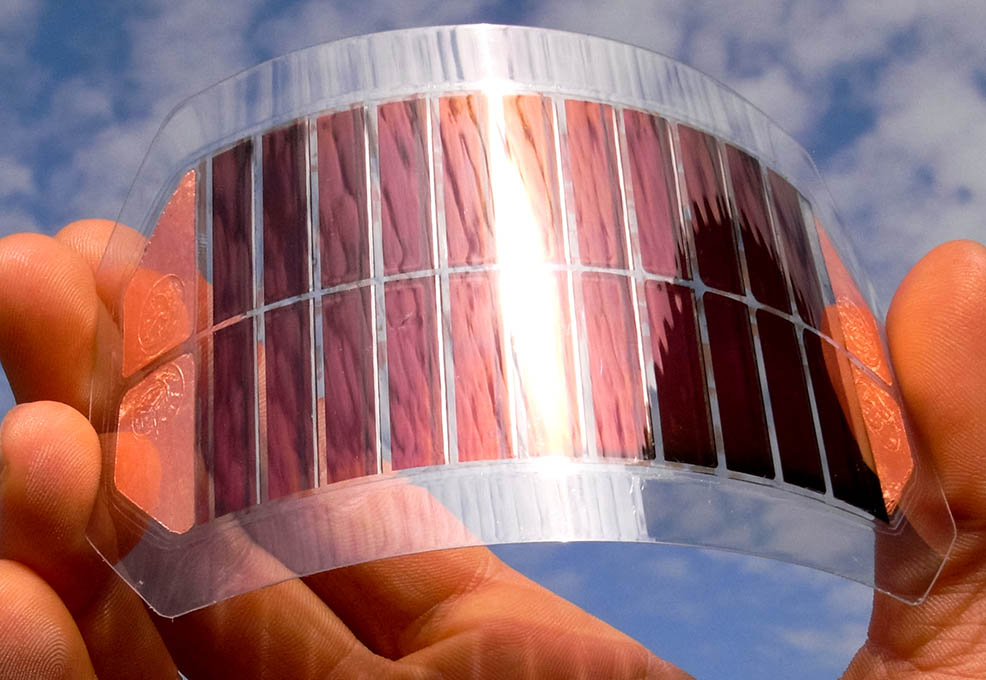Disruptive Innovation for Photovoltaic Technology: Perovskite Solar Cells

Author(s)
Shih-Hsiang HsuBiography
Dr. Shih-Hsiang Hsu was previously with Corning Inc., where he led the establishment of electro-optic characterization instrumentation and product development for optical filters, VOA, and 10-Gb/s high-speed receivers. Dr. Hsu has been a faculty member with the Department of Electronic Engineering, National Taiwan University of Science and Technology, since 2006.
Academy/University/Organization
National Taiwan University of Science and Technology-
TAGS
-
Share this article
You are free to share this article under the Attribution 4.0 International license
- ENGINEERING & TECHNOLOGIES
- Text & Image
- April 14,2021
Biomedical optoelectronic research is playing an important role in Point-of-Care Testing due to the spread of the new coronavirus. Early diagnostics of the disease can discover the body’s malfunctions and apply appropriate treatments at an early stage. MicroRNA is a small non-coding RNA which functions in post-translational regulation of gene expression. The detection of miRNA expression level could be useful for cancer diagnosis in the early stage. For disease diagnosis, the serum MicroRNAs can serve as potential biomarkers for the detection of various cancers and other diseases. However, the time cost of the PCR (Polymerase chain Reaction)-based miRNA detection method still needs improvement.
Silicon-on-insulator substrates have been utilized for biosensor research in recent years. Because of the high refractive index contrast of silicon wires, its photonic device footprint can be significantly reduced. Moreover, the silicon photonic process is compatible with a complementary metal oxide semiconductor fabrication, which will benefit the development of high-density optoelectronic integrated circuits.
The novelty is to use the Mach-Zehnder interferometer combined with a micro-ring resonance cavity as a sensor, and the phase variation of the interferometer will transform the coupled optical field of micro-ring resonance into Fano resonance, the high sensitivity of which cannot be achieved by conventional micro-ring resonance cavity sensors. After the window Fourier transform and inverse transform, the phase information of the coupled optical field can be obtained to detect the refractive index changes of different analyte concentrations. This approach will effectively enhance the phase sensitivity of biological sensing up to 10-7 refractive-index-units, which is expected for the biosensing of nano-mole concentration of microRNAs.
Biomedical optoelectronic research is playing an important role in Point-of-Care Testingdue to the spread of the new coronavirus. Early diagnostics of the disease can discover the body’s malfunctions and apply the appropriate treatment in the early stage. MicroRNA (miRNA) is a small non-coding RNA which functions in post-translational regulation of gene expression. The detection of miRNA expression level could be useful for cancer diagnosis in the early stage. For disease diagnosis, the serum miRNAs can serve as potential biomarkers for the detection of various cancers and other diseases. However, the time cost of the polymerase chain reaction (PCR)-based miRNA detection method still needs improvement.
Silicon-on-insulator (SOI) substrates have been utilized for biosensor research in recent years. Because of the high refractive index contrast of the silicon wire, its photonic device footprint can be significantly reduced. Moreover, the silicon photonic process is compatible with a complementary metal oxide semiconductor fabrication, which will benefit the development of high-density optoelectronic integrated circuits (OEIC). This paper reports the use of the Mach-Zehnder interferometer combined with a micro-ring resonance cavity as a sensor. The phase variation of the interferometer transforms the coupled optical field of micro-ring resonance to Fano resonance, the high sensitivity of which cannot be achieved by conventional micro-ring resonance cavity sensors. After the window Fourier transform and inverse Fourier transform, the phase information of the coupled optical field can be obtained to detect the refractive index changes of different analyte concentrations. This approach will effectively enhance the phase sensitivity of biological sensing through the higher order of interferograms. The 1310-nm wavelength-based narrow-linewidth tunable laser source will be used to obtain interferometric fields through photodetectors, and its optical spectrum is characterized by a data acquisition card. Simulation calculations show that the biosensing measurement limit can reach up to 10-7 refractive index units (RIU), which is expected for the biosensing of nano-mole concentration of microRNAs.
The extremely steep slope of Fano resonance has obvious advantages over waveguide resonance. It has high sensitivity and a low detection limit in sensor applications. In the attached Figure 1, Ii is the Mach-Zehnder interferometer (MZI) input field intensity and Io is the MZI output field intensity. Using the coupling transmission matrix and phase matrix, we can choose ϕs of 0π, 0.25π, and 0.5π to calculate the sensitivity and verify the Fano effect on the biomedical sensing. We vary the refractive indices of analytes to 1.31, 1.32, 1.33, 1.34, and 1.35. Then the commercial software RSoft is used to calculate the effective refractive index change of the siliconwire. The optical spectrum could be multiplied through Hamming function multiplication for fast Fourier transform (FFT). The inverse FFT could derive the phase, and the limit of detection can be demonstrated as 10-7 RIU.
In this novel approach, we inject a tunable wavelength laser into an optical element system combining two micro-ring resonators and an MZI. By interfering with the different optical path differences of the micro-ring resonator and the MZI, the balanced photodetector obtains the output spectra, and the FFT, windowed function, and inverse FFT of the spectra are performed by a computer program to obtain the phase shift at various analyte concentrations. We discover that the asymmetric scattering of Fano resonance generated by the interference between the background and resonance scattering has a higher resolution for biological sensing. At the same time, the order of the spatial domain signal is selected by Hamming function to further improve the sensitivity. This phase change approach caused by the change of analyte refractive indices is more sensitive than the conventional micro-ring type resonance through wavelength variations, and can therefore detect more subtle changes in the surrounding material concentrations. Since the MZI ring-based Fano resonance biosensing can be illustrated up to 10-7 RIU, the nano-mole concentration of microRNAs is expected to be detected.
In summary, the Fano-resonance effect is introduced through a second ring resonator implemented on the other arm of the MZI. By adjusting the phase difference of the MZI and the effect of the additional ring resonator, the Fano-resonance sensitivity can be effectively improved, and the limit of detection could demonstrate 10-7 RIU.

Figure 1: Dual micro-ring resonator coupled with MZI-forming Fano resonance biosensor
STAY CONNECTED. SUBSCRIBE TO OUR NEWSLETTER.
Add your information below to receive daily updates.




